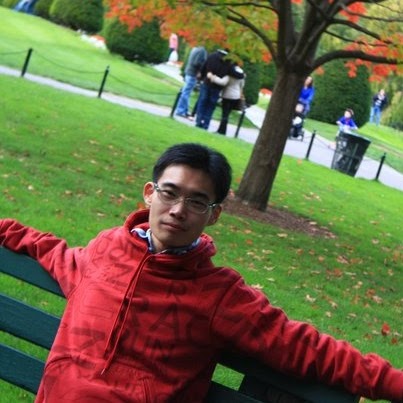Li Xu
age ~71
from El Cerrito, CA
Li Xu Phones & Addresses
- El Cerrito, CA
- Berkeley, CA
- Eugene, OR
- Palo Alto, CA
Isbn (Books And Publications)

Research And Practical Issues of Enterprise Information Systems
view sourceAuthor
Li Xu
ISBN #
0387343458
Resumes

Li Xu Fremont, CA
view sourceWork:
Self-employeed
Jan 2010 to 2000
Independent contractor Alta Bates Medical Center
Oakland, CA
Apr 2008 to Jun 2010
Staff Physicist Banner Health
Phoenix, AZ
Feb 2006 to Mar 2008
Staff Physicist University Hospital
Madison, WI
Jan 2004 to Dec 2005
Research Assistant Lejie Network Co., Ltd
Oct 1998 to May 2000
CEO Assistant
Jan 2010 to 2000
Independent contractor Alta Bates Medical Center
Oakland, CA
Apr 2008 to Jun 2010
Staff Physicist Banner Health
Phoenix, AZ
Feb 2006 to Mar 2008
Staff Physicist University Hospital
Madison, WI
Jan 2004 to Dec 2005
Research Assistant Lejie Network Co., Ltd
Oct 1998 to May 2000
CEO Assistant
Education:
University of Wisconsin Madison
Madison, WI
2003 to 2005
MS in Medical Physics University of Wisconsin Madison
Madison, WI
2000 to 2003
MS in Biomedical Engineering Chongqing University
1992 to 1996
BS in Electrical Engineering
Madison, WI
2003 to 2005
MS in Medical Physics University of Wisconsin Madison
Madison, WI
2000 to 2003
MS in Biomedical Engineering Chongqing University
1992 to 1996
BS in Electrical Engineering
Skills:
1.Treatment Planning System: Eclipse, Tomotherapy, ADAC

Li Xu Fremont, CA
view sourceWork:
National wide, USA
Mar 2011 to 2000
Locum Physicist Alta Bates Summit Medical Center
Oakland, CA
Apr 2008 to Jun 2010
Radiation Oncology Physicist Banner Health
Phoenix, AZ
Feb 2006 to Mar 2008
Radiation Oncology Physicist
Mar 2011 to 2000
Locum Physicist Alta Bates Summit Medical Center
Oakland, CA
Apr 2008 to Jun 2010
Radiation Oncology Physicist Banner Health
Phoenix, AZ
Feb 2006 to Mar 2008
Radiation Oncology Physicist
Education:
University of Wisconsin-Madison
Madison, WI
2003 to 2005
M.S. in Medical Physics University of Wisconsin-Madison
Madison, WI
MS in Biomedical Engineering
Madison, WI
2003 to 2005
M.S. in Medical Physics University of Wisconsin-Madison
Madison, WI
MS in Biomedical Engineering
Skills:
Treatment planning: Eclipse, ADAC, Tomotherapy, Plato; Plan verification program: IMSure, RadCalc; Oncology Information System: Aria, MOSAIQ; Equipment: Varian Trilogy, 21 EX, 600 C, Tomotherapy Hi Art, Elekta Synergy, Siemens Primus, Cyberknife G4, Varian VariSource, Nucletron MicroSelectron; Special Procedures: IMRT, IGRT, SBRT, SRS, TBI, PSI, HDR, Radioembolization
Name / Title
Company / Classification
Phones & Addresses
President
Chen Long, Inc
9928 Glenoaks Blvd, Shadow Hills, CA 91352
400 W Gertrude Ave, Richmond, CA 94801
400 W Gertrude Ave, Richmond, CA 94801
XIMPHOLY LLC
President
YLX Corporation
Consumer Electronics
Consumer Electronics
960 Saratoga Ave, San Jose, CA 95129
350 Marine Pkwy #200, Redwood City, CA 94065
350 Marine Pkwy #200, Redwood City, CA 94065
Us Patents
-
Method Of Cleaning A Semiconductor Device Processing Chamber After A Copper Etch Process
view source -
US Patent:6352081, Mar 5, 2002
-
Filed:Jul 9, 1999
-
Appl. No.:09/350802
-
Inventors:Danny Chien Lu - San Jose CA
Allen Zhao - Mountain View CA
Peter Hsieh - San Jose CA
Hong Shih - Walnut Creek CA
Li Xu - Santa Clara CA
Yan Ye - Saratoga CA -
Assignee:Applied Materials, Inc. - Santa Clara CA
-
International Classification:B08B 900
-
US Classification:134 221, 134 11, 134 11, 134 2214, 134 30, 134 26, 216 67, 216 74, 216 78, 438905
-
Abstract:The present invention is a method for removing deposited etch byproducts from surfaces of a semiconductor processing chamber after a copper etch process. The method of the invention comprises the following general steps: (a) an oxidation step, in which interior surfaces of the processing chamber are contacted with an oxidizing plasma; (b) a first non-plasma cleaning step, in which interior surfaces of the processing chamber are contacted with an H hfac-comprising gas; and (c) a second cleaning step, in which interior surfaces of the processing chamber are contacted with a plasma containing reactive fluorine species, whereby at least a portion of the copper etch byproducts remaining after step (b) are volatilized into gaseous species, which are removed from the processing chamber. The method of the invention is preferably performed at a chamber wall temperature of at least 150Â C. in order to achieve optimum cleaning of the chamber at the chamber operating pressures typically used during the cleaning process.
-
Beam Automation In Charged-Particle-Beam Systems
view source -
US Patent:6476398, Nov 5, 2002
-
Filed:Feb 26, 2000
-
Appl. No.:09/514080
-
Inventors:Li Xu - Santa Clara CA
Richard Barnard - Fremont CA -
Assignee:Applied Materials, Inc. - Santa Clara CA
-
International Classification:G21K 108
-
US Classification:250396R
-
Abstract:Embodiments in accordance with the invention provide respectively for auto-focus, auto-contrast, and auto-correction of astigmatism in both x and y directions, are independent of focus-induced-image-rotation, sample feature orientation and image deformation, and focus-induced-image magnification change, and are insensitive to various kinds of noise. Poor image contrast is handled by an auto-contrast capability. Embodiments in accordance with the invention can achieve high reliability and repeatability, while providing for faster operation than most prior-art methods.
-
Diamond Coated Parts In A Plasma Reactor
view source -
US Patent:6508911, Jan 21, 2003
-
Filed:Aug 16, 1999
-
Appl. No.:09/375243
-
Inventors:Nianci Han - San Jose CA
Hong Shih - Walnut CA
Jennifer Y. Sun - Sunnyvale CA
Li Xu - San Jose CA -
Assignee:Applied Materials Inc. - Santa Clara CA
-
International Classification:H05H 100
-
US Classification:156345, 118723 R, 118723 I
-
Abstract:A diamond coating formed on a bulk member used in a plasma processing chamber for processing a substrate such as a semiconductor wafer. The coating is particularly useful in a plasma etching chamber using a chlorine-based chemistry to etch metal. One class of such parts includes a dielectric chamber wall, in particular, a chamber wall through which RF or microwave energy is coupled into the chamber to support the plasma. For example, an RF inductive coil is positioned outside the chamber wall and inductively couples energy into the chamber. Exemplary substrates for the diamond coating include alumina, silicon nitride, silicon carbide, polysilicon, and a SiC/Si composite. Amorphous carbon may be substituted for diamond.
-
Wavy And Roughened Dome In Plasma Processing Reactor
view source -
US Patent:6623595, Sep 23, 2003
-
Filed:Mar 27, 2000
-
Appl. No.:09/536478
-
Inventors:Nianci Han - San Jose CA
Hong Shih - Walnut CA
Li Xu - San Jose CA
Yan Ye - Saratoga CA -
Assignee:Applied Materials, Inc. - Santa Clara CA
-
International Classification:C23F 100
-
US Classification:1563451, 118723 R, 118723 I, 118723 AN, 118723 MW, 15634541, 15634548
-
Abstract:A ceramic dome for in a plasma processing chamber having an RF coil disposed outside of said dome. The interior of the dome is formed with macroscopic grooves, and the grooves are roughened into a microscopic structure. The roughening provides increased adhesion to a residue film deposited on the dome during plasma processing. The macroscopic grooves increase the effective area of the dome and thus decreases the thickness of deposited film. The grooves may be formed by machining a green form of the ceramic material cast prior to sintering. The roughening may be formed by bead blasting the machined green form. Thereafter, the green form is fired to form a sintered ceramic dome.
-
Process Chamber Having Component With Yttrium-Aluminum Coating
view source -
US Patent:6942929, Sep 13, 2005
-
Filed:Jan 8, 2002
-
Appl. No.:10/042666
-
Inventors:Nianci Han - San Jose CA, US
Li Xu - San Jose CA, US
Hong Shih - Walnut CA, US -
International Classification:B32B015/00
B32B015/04
B32B015/20
C23C016/00 -
US Classification:428650, 428701, 428697, 428610, 428654, 428640, 428469, 428 341, 428332, 118715, 118728, 118500
-
Abstract:A substrate processing chamber component is a structure having an integral surface coating comprising an yttrium-aluminum compound. The component may be fabricated by forming a metal alloy comprising yttrium and aluminum into the component shape and anodizing its surface to form an integral anodized surface coating. The chamber component may be also formed by ion implanting material in a preformed metal shape. The component may be one or more of a chamber wall, substrate support, substrate transport, gas supply, gas energizer and gas exhaust.
-
Process Chamber Component Having Electroplated Yttrium Containing Coating
view source -
US Patent:7371467, May 13, 2008
-
Filed:Apr 13, 2004
-
Appl. No.:10/824123
-
Inventors:Nianci Han - San Jose CA, US
Li Xu - San Jose CA, US
Hong Shih - Walnut CA, US
Yang Zhang - Albany CA, US
Danny Lu - Milpitas CA, US
Jennifer Y. Sun - Sunnyvale CA, US -
Assignee:Applied Materials, Inc. - Santa Clara CA
-
International Classification:B32B 15/04
B32B 15/20
B01J 19/02
B05C 11/00
G03F 7/16 -
US Classification:428632, 428633, 428660, 422241, 118506, 118715
-
Abstract:A component capable of being exposed to a plasma in a process chamber has a structure having an electroplated coating comprising yttrium-containing species. The electroplated coating is resistant to corrosion in the plasma, and can have a compositional gradient of yttrium-containing species through a thickness of the coating. In one embodiment, the coating is formed by electroplating a layer comprising yttrium onto the surface, and then electroplating a second layer onto the first layer, and annealing the first and second layers. The second layer can comprise aluminum or zirconium. In another embodiment, the coating is formed by electroplating a layer comprising a mixture of aluminum and yttrium onto the surface and annealing the layer.
-
Gas Distribution Plate Fabricated From A Solid Yttrium Oxide-Comprising Substrate
view source -
US Patent:7479304, Jan 20, 2009
-
Filed:Aug 13, 2004
-
Appl. No.:10/918232
-
Inventors:Jennifer Y. Sun - Sunnyvale CA, US
Senh Thach - Union City CA, US
James Dempster - Sunnyvale CA, US
Li Xu - San Jose CA, US
Thanh N. Pham - San Jose CA, US -
Assignee:Applied Materials, Inc. - Santa Clara CA
-
International Classification:C23C 16/00
B05D 3/12 -
US Classification:427289
-
Abstract:Disclosed herein is a gas distribution plate for use in a gas distribution assembly for a processing chamber, where the gas distribution plate is fabricated from a solid yttrium oxide-comprising substrate, which may also include aluminum oxide. The gas distribution plate includes a plurality of through-holes, which are typically crescent-shaped. Through-holes which have been formed in the solid yttrium oxide-comprising substrate by ultrasonic drilling perform particularly well. The solid yttrium oxide-comprising substrate typically comprises at least 99. 9% yttrium oxide, and has a density of at least 4. 92 g/cm, a water absorbency of about 0. 02% or less, and an average grain size within the range of about 10 μm to about 25 μm. Also disclosed herein are methods for fabricating and cleaning the yttrium oxide-comprising gas distribution plate.
-
Multicolor Illumination Device Using Moving Plate With Wavelength Conversion Materials
view source -
US Patent:7547114, Jun 16, 2009
-
Filed:Jul 30, 2007
-
Appl. No.:11/830311
-
Inventors:Yi Li - Pleasanton CA, US
Li Xu - Saratoga CA, US -
Assignee:YLX Corp. - San Jose CA
-
International Classification:F21V 9/00
-
US Classification:362231, 362293, 362555, 362583, 362284, 362324, 353 20, 353 31
-
Abstract:A multicolor illumination device using an excitation light source and a multi-segmented moving plate with wavelength conversion materials (e. g. phosphors) is disclosed. The exciting light source is a light emitting diode or a laser diode emitting in the UV and/or blue region. The wavelength conversion materials absorb the excitation light and emit longer wavelength light. Each segment of the moving plate contains a different wavelength conversion material or no wavelength conversion material. The plate is supported to move so that different segments are exposed to the excitation light at different times. The plate may be a wheel or rectangular in shape and rotates or oscillates linearly. When the plate moves, light of different colors is generated sequentially in time by the different wavelength conversion materials in different segments of the plate. The multicolor illumination device may be used in a projector system having a microdisplay imager for image display.
License Records
Li Xu
License #:
37963 - Active
Category:
Professional
Issued Date:
Jul 9, 2002
Expiration Date:
Sep 30, 2017

Wo Shin Li Xu
view source
Li Juan Xu
view source
Li Xu
view source
Li Xu
view source
Li Xu
view source
Li Li Xu
view source
LI XU
view source
Li Xu Hui
view sourcePlaxo

Li Xu
view sourceSulzbach a.T.Associate at HPI Asia Pacific GmbH Past: Information Management Intern at METRO Cash Carry Deutschland GmbH, M&A Intern at CWS-boco...

Li Lily Xu
view sourceChantilly, VA
Googleplus

Li Xu

Li Xu
Work:
Domob

Li Xu
Education:
Georgia Institute of Technology

Li Xu
Tagline:
Moving forward

Li Xu

Li Xu

Li Xu

Li Xu
Flickr
Youtube
Myspace
Get Report for Li Xu from El Cerrito, CA, age ~71








![SJ-M Sohu interview [SJ-M] SJ-M Sohu interview [SJ-M]](https://i.ytimg.com/vi/yG_uVnG4L4M/0.jpg)





